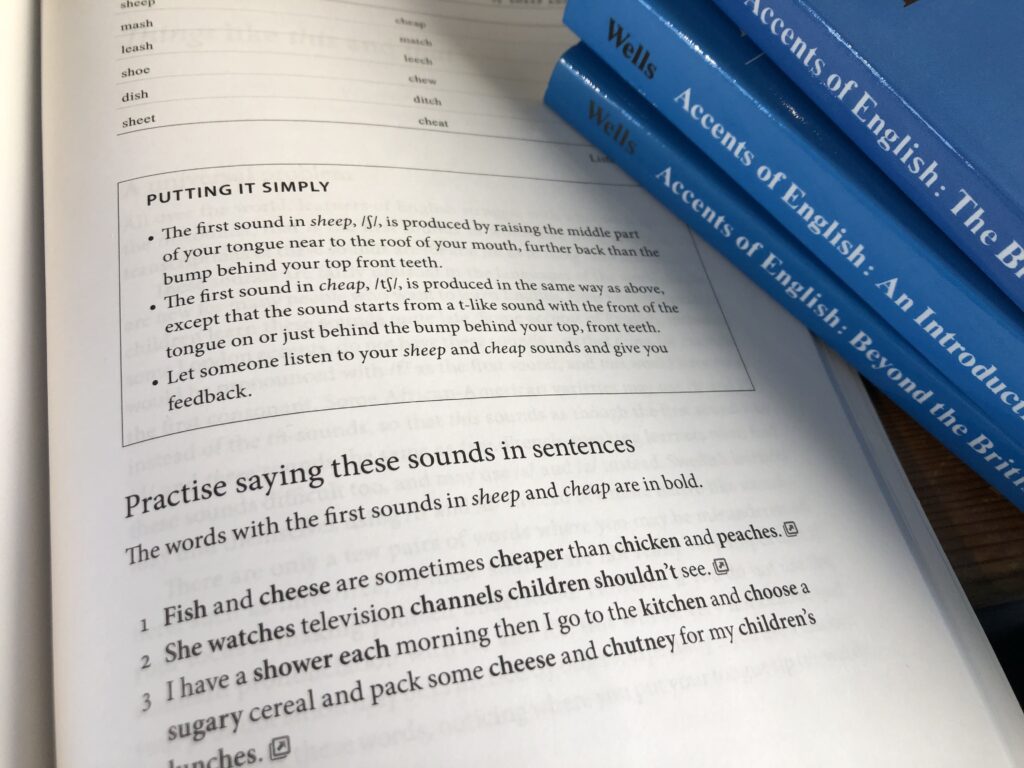
Reading
John M. Levis at Iowa State University is a major contributor to the field of second language pronunciation teaching. Take a look at this interview with him by Martha C. Pennington, another well-respected researcher in the field. Conversations with Experts – In Conversation with John Levis, Editor of Journal of Second Language Pronunciation. You will also enjoy Martha Pennington’s very recent position paper:
- Pennington, M. C. (2021). Teaching Pronunciation: The State of the Art 2021. RELC Journal, 52(1), 3–21. https://doi.org/10.1177/00336882211002283
John Levis also convenes the annual Second Language Learning and Teaching Conference, and the Proceedings from these are available for open access. One such paper is by Anna Jarosz at the University of Lodz, in Poland, and another by Mara Haslam (and colleague Elisabeth Zetterholm) from Stockholm University. Our researcher interview for this module is with Anna and Mara.
- Jarosz, A. (2018). Secondary school learners’ pronunciation needs, perceptions and attitudes. In Proceedings of the 10th Pronunciation in Second Language Learning and Teaching Conference, (p. 296-306).
- Haslam, M., & Zetterholm, E. (2016). The importance of aspirated initial stops in English as a lingua franca. (pp. 66-75).
The Proceedings volumes from this conference series have some more very interesting reading, such as:
- de Moras, N. (2016). Learning L2 pronunciation while studying vocabulary. (pp. 211-219).
- Grim, F., & Sturm, J. (2016). Where does pronunciation stand in the 21st century foreign language classroom? Educators’ and learners’ views. (pp. 51-59).
- Haslam, M., & Zetterholm, E. (2019). The role of consonant clusters in English as a lingua franca intelligibility.
and while we are at it, a last treat from my friend and colleague in Lodz, Ewa Waniek-Klimczak:
- Waniek-Klimczak, E. (2015). Correctness in pronunciation instruction: Teachers’ and learners’ views. Konińskie Studia Językowe, 3(1), 75-88.
Reading questions
Lots of reading this time, but choose what ever you find interesting and relevant to dig into. Here are some questions to help focus your reading. Feel free to comment below, join our live conversation (sign up below), and/or set up one of your own.
- Pronunciation teaching has been called the Cinderella of language teaching. Do you agree that pronunciation teaching is not given enough attention? Why do/don’t you think pronunciation should have more focus in language teaching?
- Going back to Nation’s Four Strands model of language teaching (re-view Tore’s presentation in the module on Grammar teaching if you need to refresh your memory on that), where would the teaching of pronunciation fit in. Is it only in the language-focussed strand, or is there a way to make pronunciation teaching more meaning-focussed.
- What about the input and output side of it? Pronunciation has both a role for the speaker and for the listener. Can learners hear sound distinctions they cannot pronounce, and vice-versa?
- Where do you yourself stand on the teaching of pronunciation? What is the role of “say after me” vs explicit teaching using phonetic symbols and terminology? How can we help learners notice sounds and sound combinations that they are mispronouncing?
Interview
In this module the interview is with two pronunciation teaching researchers who have not (yet) published together, Anna Jarosz and my colleague at the Department of Language Education at Stockholm University, Mara Haslam.
Live conversation
There was a live conversation about Teaching pronunciation on 26 August 2021.
